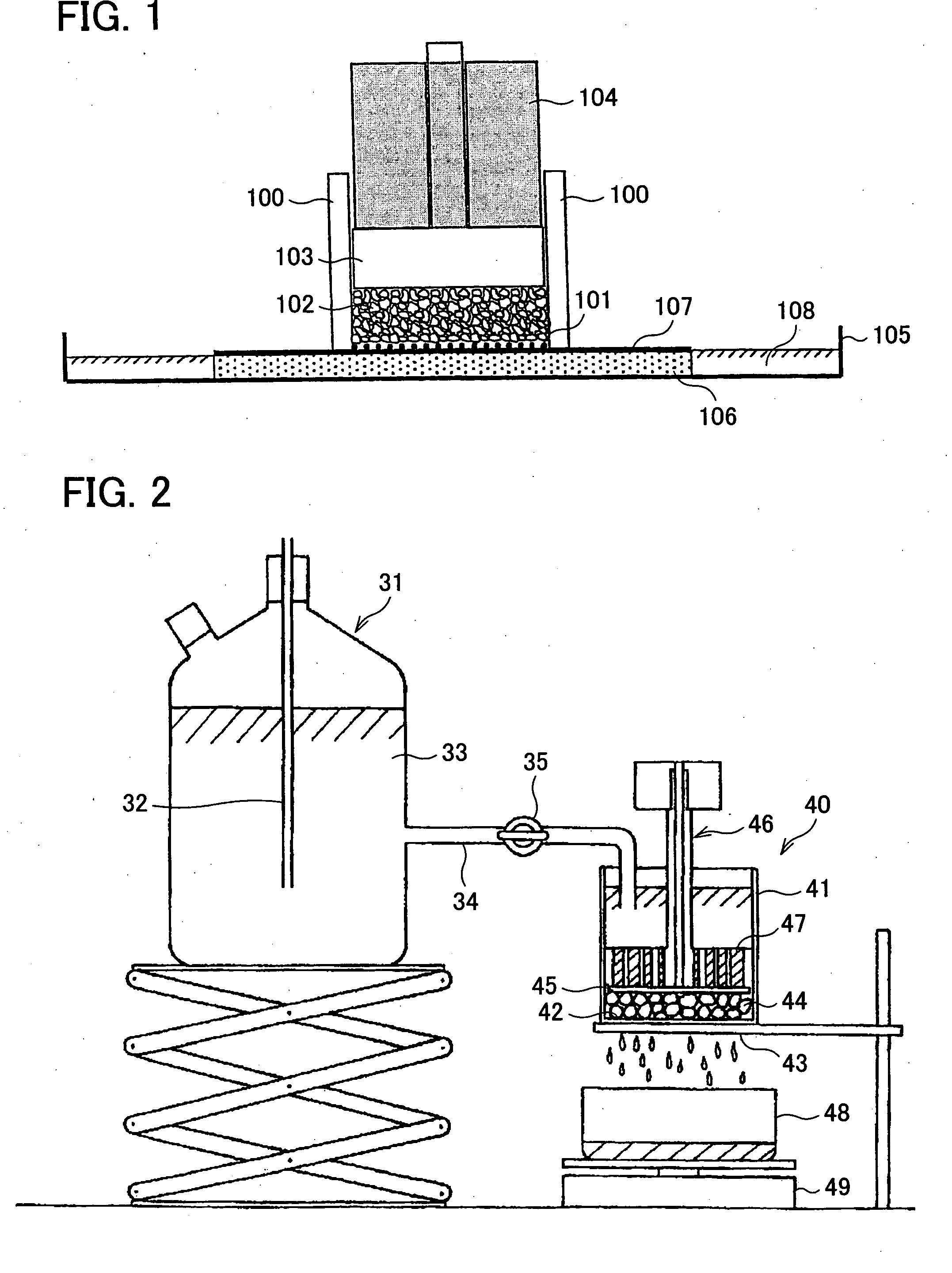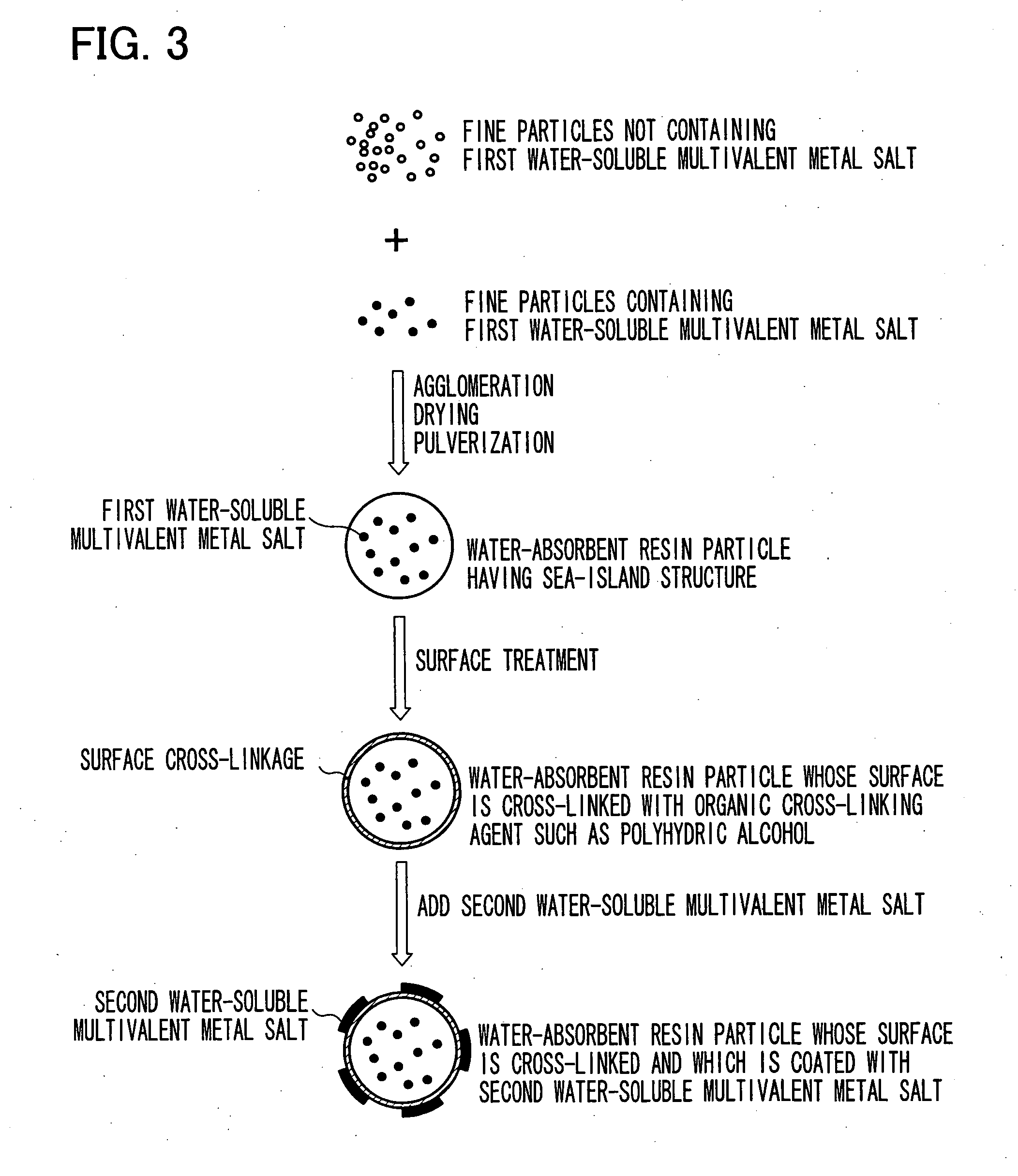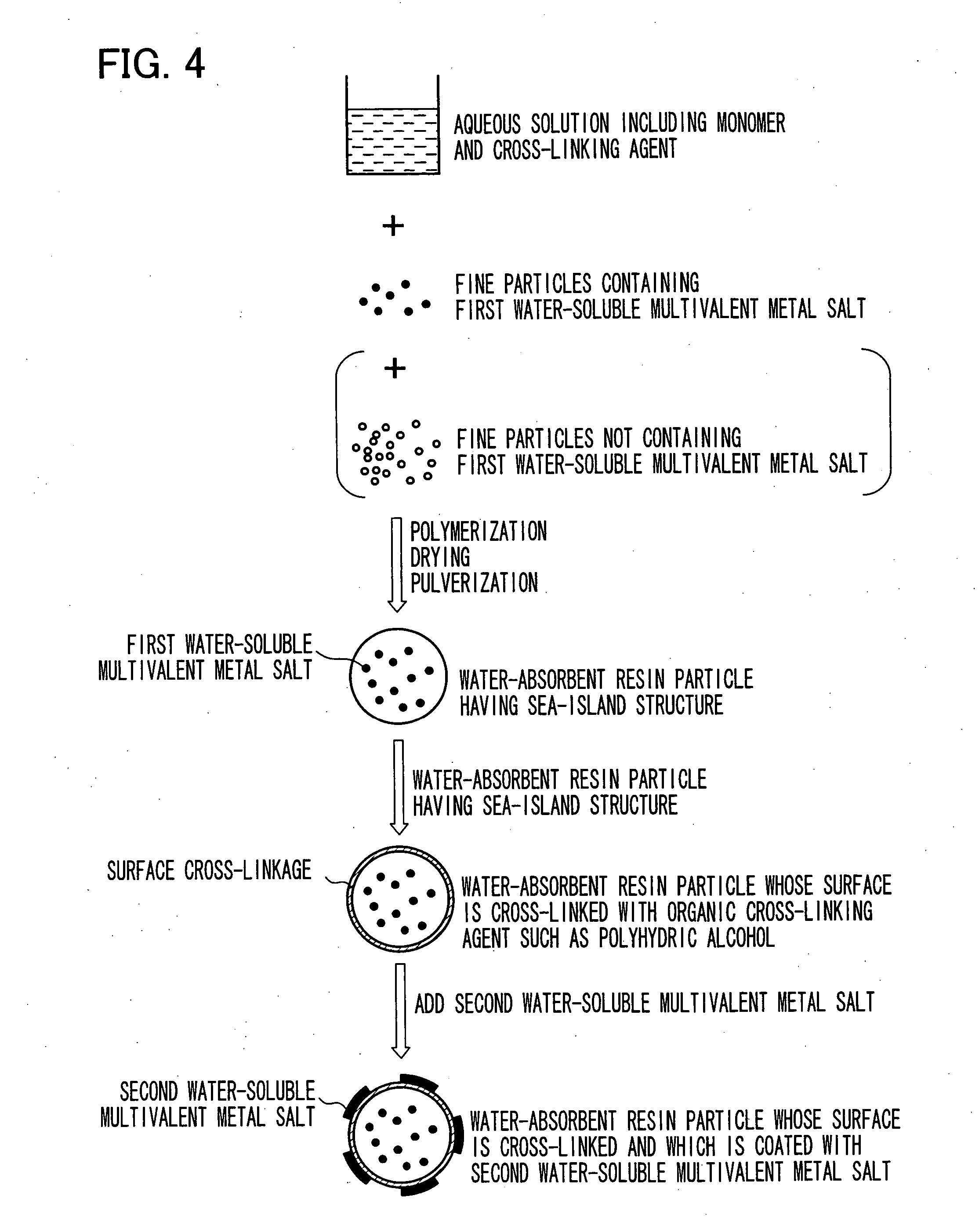Water-absorbing agent and its production process
a technology of water-absorbing resin and production process, which is applied in the direction of cellulosic plastic layered products, natural mineral layered products, transportation and packaging, etc., can solve the problems of reducing the permeability of water-absorbing resin, etc., to achieve excellent water retention, excellent liquid permeability, and less water-soluble component content
- Summary
- Abstract
- Description
- Claims
- Application Information
AI Technical Summary
Benefits of technology
Problems solved by technology
Method used
Image
Examples
production example 1
[0382] 396.7 g of acrylic acid, 4198.1 g of 37 mass % sodium acrylate aqueous solution, 348.1 g of pure water, and 8.64 g of polyethyleneglycoldiacrylate (molecular weight was 523) were dissolved in a reactor that had been prepared by placing a lid on a 10 L stainless-steel double-arm kneader equipped with two sigma blades and a jacket, thereby obtaining a reaction solution. Then, the reaction solution was deaerated for 20 minutes in an atmosphere of nitrogen gas. Subsequently, 26.43 g of 10 mass % sodium persulfate aqueous solution and 22.02 g of 0.1 mass % L-ascorbic acid aqueous solution were added to the reaction solution, while the reaction solution was stirred. Approximately one minute later, polymerization was initiated. During the polymerization, the reaction solution was kept at 20° C. to 95° C. while the generated gel was being pulverized. After 30 minutes from the initiation of the polymerization, the cross-linked hydrogel polymer was removed from the reactor. Thus obtain...
example 1
[0386] 85 parts by mass of the water-absorbent resin particles (1b) and 15 parts by mass of the water-absorbent resin particles (1b-2) were evenly mixed together, and the thus obtained mixture was heated to 60° C. To the heated mixture, 1.20 parts by mass of hot water of a temperature of 90° C. was quickly added, and stirred at high speed for one minute. The thus obtained hydrogel was dried at 180° C. for 50 minutes, pulverized by using a roll mill, and then classified by using a JIS standard sieve whose mesh size was 600 μm and a JIS standard sieve whose mesh size was 150 μm, thereby obtaining water-absorbent resin particles (1b-3) in irregularly-pulverized shape. In 100 parts by mass of thus obtained water-absorbent resin particles (1b-3), a surface cross-linking agent including 0.4 parts by mass of 1,4-butanediol, 0.6 parts by mass of propyleneglycol, and 3.0 parts by mass of pure water, was mixed evenly. The mixture was then heated at 200° C. for 30 minutes. Further, the particl...
example 2
[0387] The water-absorbent resin particles (1b-4) were used as a water-absorbing agent (2).
PUM
| Property | Measurement | Unit |
|---|---|---|
| mass average particle diameter | aaaaa | aaaaa |
| particle diameter | aaaaa | aaaaa |
| particle diameter | aaaaa | aaaaa |
Abstract
Description
Claims
Application Information
 Login to View More
Login to View More - R&D
- Intellectual Property
- Life Sciences
- Materials
- Tech Scout
- Unparalleled Data Quality
- Higher Quality Content
- 60% Fewer Hallucinations
Browse by: Latest US Patents, China's latest patents, Technical Efficacy Thesaurus, Application Domain, Technology Topic, Popular Technical Reports.
© 2025 PatSnap. All rights reserved.Legal|Privacy policy|Modern Slavery Act Transparency Statement|Sitemap|About US| Contact US: help@patsnap.com



